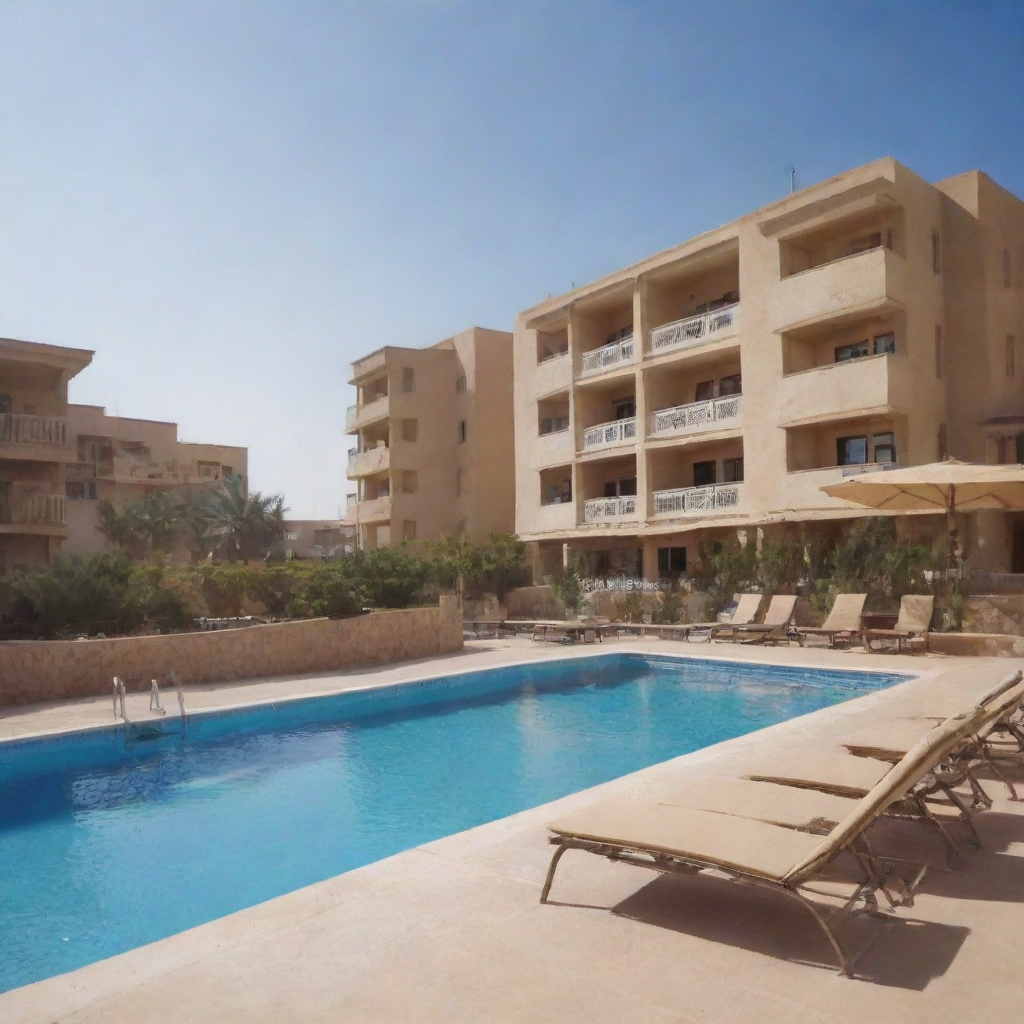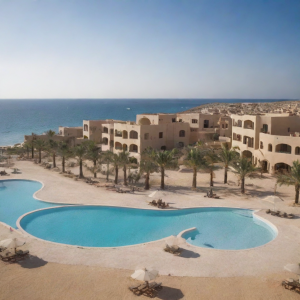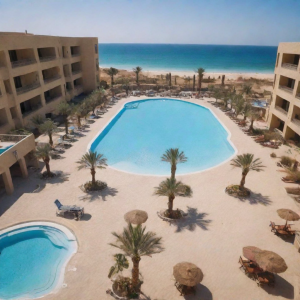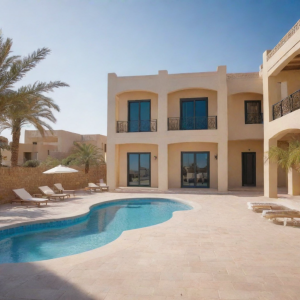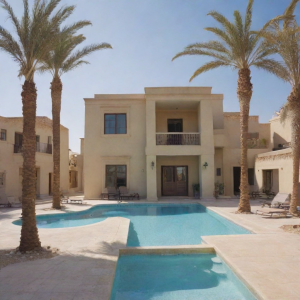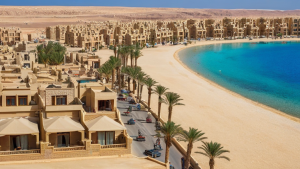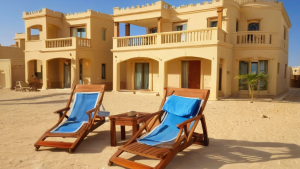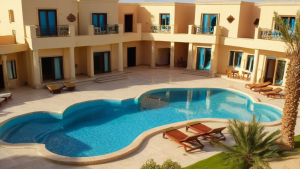Summary about owning and buying property in Hurghada, Egypt.
- In 2027, Hurghada’s villa scene is embracing modern minimalism, blending clean lines with the natural beauty of the Red Sea coast.
- This includes solar panels strategically installed to maximize energy efficiency, rainwater harvesting systems to conserve water, and the use of recycled or responsibly sourced building materials.
- Hurghada’s villas in 2027 embrace the rise of smart home technology, integrating automation systems to improve convenience, security, and comfort.
- This blending of old and new elevates the villas’ aesthetic appeal while offering residents a connection to Hurghada’s rich history.
- These create visual illusions that blur the line between the villa and the ocean, enhancing views and producing a luxurious ambiance.
Emerging architectural trends shaping Hurghada’s villas in 2027
Modern minimalism meets coastal charm
In 2027, Hurghada’s villa scene is embracing modern minimalism, blending clean lines with the natural beauty of the Red Sea coast. Homeowners and developers are focusing on simplicity and elegance, stripping down unnecessary decor to highlight spacious layouts and open-plan designs. This style enhances natural light, which floods the villas through expansive glass walls. Floor-to-ceiling windows not only invite the stunning seaside views indoors but also create a seamless connection between interior and exterior living spaces.
The minimalist approach is paired with coastal elements such as sandy beige tones, soft blues, and organic materials like wood and stone. This fusion brings warmth and comfort, offering a stylish yet relaxed atmosphere perfect for Hurghada’s sunny climate. The use of natural textures complements the minimalist design, ensuring the villas feel inviting without overwhelming the senses.
Eco-friendly and sustainable architecture
Sustainability is rapidly influencing villa design throughout Hurghada. In 2027, more villas are being constructed with eco-conscious principles at their core. This includes solar panels strategically installed to maximize energy efficiency, rainwater harvesting systems to conserve water, and the use of recycled or responsibly sourced building materials.
Green roofs and vertical gardens are also popular trends, bringing greenery into urban settings and helping regulate indoor temperatures naturally. These eco-friendly features not only reduce the villas’ environmental footprint but also enhance air quality and create peaceful retreats amid the desert surroundings.
Builders emphasize passive design techniques as well. Large overhangs provide shade during peak sunlight hours, while cross-ventilation designs reduce the need for air conditioning. These architectural choices help maintain comfortable temperatures throughout the year, proving functional and energy-efficient.
Smart villas with integrated technology
Hurghada’s villas in 2027 embrace the rise of smart home technology, integrating automation systems to improve convenience, security, and comfort. Voice-controlled lighting, climate control, and security cameras are becoming standard features. These smart villas offer residents the ability to control various home functions remotely via smartphones or tablets.
Advanced security systems employ AI-powered surveillance and facial recognition, providing peace of mind for homeowners. Meanwhile, automated irrigation systems optimize garden care, conserving water without sacrificing the lush landscapes that enhance the villa’s outdoor area.
Technology also supports sustainable living. Smart meters track energy consumption in real-time, helping residents understand and reduce their environmental impact. In addition, state-of-the-art insulation and HVAC systems work alongside smart controls to maintain eco-efficiency.
Fusion of traditional Egyptian and contemporary styles
While modern influences dominate, there’s a growing appreciation for incorporating local Egyptian architectural elements. This fusion creates villas that respect cultural heritage while delivering contemporary luxury.
You’ll notice traditional Mashrabiya screens used as artistic window coverings or room dividers, providing privacy and sun protection with a distinct pattern. These wooden lattice screens allow airflow while creating intricate shadows that add artistic flair to living spaces.
Other features include courtyards with central water fountains that provide a soothing atmosphere and natural cooling. Earth-toned plaster walls with minimal ornamentation pay homage to desert architecture, creating harmony between the villa and its environment.
This blending of old and new elevates the villas’ aesthetic appeal while offering residents a connection to Hurghada’s rich history.
Emphasis on outdoor living and entertainment
Given Hurghada’s year-round pleasant weather, villas designed in 2027 emphasize outdoor living spaces more than ever. Expansive terraces with built-in lounges, dining areas, and open kitchens encourage social gatherings and relaxed lifestyles.
Infinity pools overlooking the sea are becoming iconic features. These create visual illusions that blur the line between the villa and the ocean, enhancing views and producing a luxurious ambiance. Many pools now include integrated lighting systems and smart heating for year-round enjoyment.
Landscaping in these outdoor spaces focuses on drought-resistant plants and native species to maintain greenery without excessive water use. Pergolas and retractable awnings provide shade, making outdoor areas usable at all hours.
Use of innovative materials and construction techniques
Cutting-edge materials are transforming the durability and aesthetics of Hurghada’s villas. Lightweight concrete, energy-efficient glass, and composite materials allow for more creative, sustainable designs capable of withstanding coastal weather while minimizing maintenance.
3D printing technology is slowly making its way into villa construction, offering faster building times and more customized architectural features that were previously difficult or expensive to produce. These advanced methods help reduce waste and construction costs, appealing to both developers and homeowners.
Additionally, adaptive facades and dynamic shading systems respond to changes in sunlight and temperature throughout the day, optimizing energy efficiency and indoor comfort without sacrificing style.
The future of Hurghada’s villas
As 2027 unfolds, Hurghada’s villa architecture is clearly moving toward a harmonious blend of modern innovation, sustainability, cultural respect, and luxurious living. If you’re considering investing in or designing a villa in Hurghada, understanding these emerging trends can guide you toward a home that’s not only beautiful and functional but also future-ready.
How sustainable design influences the future of Hurghada’s residential spaces
Emergence of eco-friendly materials in Hurghada’s residential architecture
In Hurghada, the surge in sustainable design practices is reshaping how residential spaces are conceptualized and built. The shift toward eco-friendly materials is at the heart of this transformation, influencing every stage of villa construction from planning to finishing touches. Builders and designers now prioritize natural, locally sourced materials such as stone, bamboo, and sustainably harvested wood. These choices not only reduce the environmental impact associated with transportation and manufacturing but also create healthier living environments for residents.
Moreover, innovative materials like recycled glass tiles and energy-efficient insulation are becoming staples in new buildings. These elements help in lowering energy consumption by improving thermal efficiency, which is vital in a hot climate like Hurghada’s. By integrating these sustainable materials, homeowners benefit from reduced utility bills and enjoy spaces that maintain comfortable temperatures year-round.
Design strategies that maximize natural resources
Maximizing natural resources plays a key role in the sustainable revolution sweeping Hurghada’s residential developments. Architects are increasingly designing villas that utilize natural light, airflow, and shading to cut down on artificial lighting and cooling needs. Orienting homes to capture the gentle sea breezes and minimize exposure to the harsh midday sun exemplifies smart sustainable planning.
Large windows, skylights, and open floor plans not only enhance the aesthetic appeal but also help in harnessing daylight effectively, reducing reliance on electric lighting. Additionally, green roofs and pergolas are commonly incorporated to provide shade and moderate indoor temperatures naturally. such passive design features demonstrates how sustainable architectural practices improve the quality of life while preserving valuable energy resources.
Integration of renewable energy systems
Renewable energy has become a cornerstone of Hurghada’s sustainable residences. Solar panels are now a common sight on villa rooftops, taking full advantage of the abundant sunshine this region enjoys. These systems contribute significantly to reducing the carbon footprint of homes by providing clean, renewable power for lighting, heating water, and even charging electric vehicles.
Advanced energy storage solutions paired with solar installations allow residents to store excess power generated during the day for use at night or on cloudy days. This independence from the conventional electrical grid not only promotes sustainability but also ensures greater reliability and lower energy costs.
Water conservation innovations in residential designs
Hurghada’s villas are increasingly adopting sustainable innovations that address water scarcity, which is a critical concern in arid regions. Rainwater harvesting systems, greywater recycling, and water-efficient fixtures are becoming standard features in new homes. These technologies enable residents to drastically reduce their freshwater consumption while maintaining lush, well-irrigated gardens and indoor comfort.
For example, greywater systems recycle used water from sinks and showers to irrigate outdoor plants. Coupled with drought-resistant landscaping, these solutions support sustainable living without sacrificing luxury or aesthetic appeal. By conserving water through thoughtful design, Hurghada’s residential communities are helping to safeguard this precious resource for future generations.
The role of smart home technology in sustainability
Smart home technology is playing an increasingly important role in promoting sustainable residential spaces. Automated systems now allow homeowners in Hurghada to monitor and control energy use more efficiently through responsive lighting, heating, and cooling adjustments. Sensors detect occupancy and ambient conditions, ensuring that energy is only used when and where it’s needed.
Smart irrigation systems, for example, optimize water delivery based on soil moisture levels and local weather forecasts, eliminating wasteful water usage. These innovations not only support environmental goals but also enhance convenience and comfort, making sustainable living both practical and appealing to residents.
The social and economic impact of sustainable residential design
Sustainable design in Hurghada’s residential sector goes beyond environmental benefits; it also impacts the social and economic fabric of the community. For buyers, investing in eco-conscious homes often means long-term savings through reduced utility bills and maintenance costs. Additionally, sustainable villas tend to hold or increase their market value as demand for green living continues to rise.
From a community standpoint, widespread adoption of sustainable building practices can improve local air quality, reduce waste, and conserve vital natural resources. These positive effects contribute to a higher quality of life and foster a sense of responsibility and pride among residents. Hurghada is positioning itself as a forward-thinking city where modern comfort and environmental stewardship go hand in hand.
Future outlook: innovations shaping Hurghada’s residential landscape
Looking ahead to 2027 and beyond, the influence of sustainable design in Hurghada’s residential spaces is poised to grow even stronger. Architectural firms are experimenting with modular construction, which reduces material waste and shortens build times, along with biophilic design that connects residents with natural elements inside and outside their homes.
Urban planners are also integrating smart grids and community-wide renewable projects to maximize efficiency at a larger scale. These innovations reflect a comprehensive approach to sustainability that blends technology, design, and natural resource management. For anyone interested in living in Hurghada’s villas, understanding these trends can provide valuable insight into the future of real estate investment and lifestyle quality in this vibrant coastal city.
As Hurghada steps into 2027, its villa architecture is undergoing a remarkable transformation driven by fresh design trends and a solid commitment to sustainability. The emerging architectural styles blend modern aesthetics with functional living spaces, creating homes that are not only visually striking but also highly adaptable to the needs of residents. These new trends reflect a shift towards minimalism and smart integration of indoor and outdoor environments, amplifying the natural beauty of the Red Sea region.
At the heart of this evolution is sustainable design, which plays a pivotal role in shaping Hurghada’s residential future. Eco-friendly materials, energy-efficient systems, and water-wise landscaping are becoming standard features, making villas more environmentally responsible without compromising luxury. This green approach not only reduces the ecological footprint but also enhances comfort and reduces living costs for homeowners.
For anyone looking to invest in Hurghada real estate or simply curious about architectural innovation, understanding these new styles offers valuable insight into where the market and lifestyle are headed. The fusion of modern design with sustainability ensures that villas in Hurghada will remain attractive and relevant for years to come, providing homes that support wellbeing while respecting nature. Embracing these trends means you can expect vibrant living spaces that honor tradition yet embrace the demands of the future.

